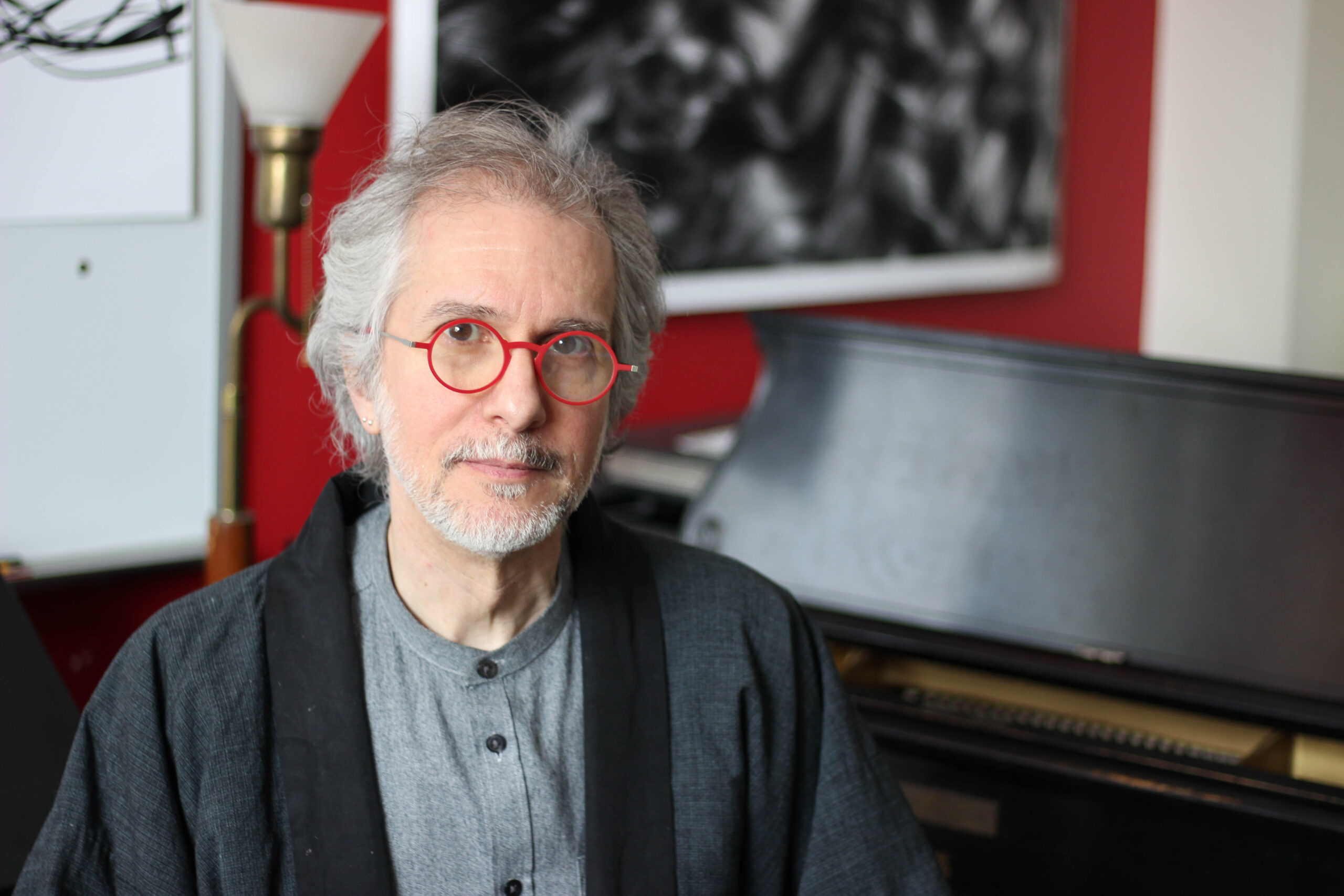Mauceri redefines music through computation
February 28, 2020
 Kayla Snyder
Kayla SnyderFrank Mauceri, senior lecturer in music and coach of Bowdoin’s jazz combos, loves to play music with students. His other, more unconventional combo-partner, however, is his computer. Mauceri merges music with computer science, using machine learning and machine listening to improvise and play songs.
“I work, and often perform, with systems where the computer is listening to me and responding to me like another musician would,” he said. “I have many pieces for saxophone where the computer is listening to me play the saxophone and responding by synthesizing sound, or by processing my sound. It’s like an improvisation partner that I’ve designed.”
Mauceri has spent his life exploring the intersection between art and technology. He began to fuse art and science as an undergrad at Oberlin College, where he studied music composition and art theory. He took electronic music courses as well as computer programming courses in undergrad, and later expanded his research under Herbert Brün in a graduate program at the University of Illinois at Urbana-Champaign.
“[Brün] was an important pioneer of computer music and was very influential. He also did visual art with computers, so my thesis project as a graduate student was a computer-related composition project,” said Mauceri.
Mauceri now makes musical and visual compositions, writing his own code to create his pieces while avoiding commercial software like Photoshop or Illustrator.
“The processes that I explore in sound are very similar to the processes that I explore visually,” Mauceri said. “All this work is visual work that I’ve done, and it’s very much related to the algorithms that I would use to synthesize sound or music.”
Algorithms are a crucial piece for Mauceri because he believes in focusing on the process of creation as opposed to the end result.
“Computer programming is a creative mode of thinking,” he said. “I’m interested in creating an interesting system that is information rich and that has a lot of potential for discovery. I designed some systems to see what they do. I observe how they behave and that for me is a rewarding way of working.”
At Bowdoin, Mauceri encourages process-driven thinking in his music theory composition and music technology courses. In part because of his interdisciplinary background, he values working with students from multiple fields.
“For me it’s very rewarding to have a classroom full of students with mixed backgrounds,” he said. “Right now I’m teaching a computer composition class. I have students who are computer science and math people and I also have students who are music focused.”
Outside of the classroom he has a long-running collaboration with Polish video artist Maciej Walczak, who teaches at the Music Academy of Lódz.
“He does live video, and I do live sound,” Mauceri explained. “We exchange control information in real time so that my sound is affecting his video and his video is affecting my sound.”
Anyone intrigued by Mauceri’s innovative practice can check it out in Bowdoin’s backyard. His work will be featured in an upcoming group gallery show titled Collective Exhibition #2 at the Frank Brockman Gallery on Maine Street, which opens on March 6 and runs through April.

Comments
Before submitting a comment, please review our comment policy. Some key points from the policy: